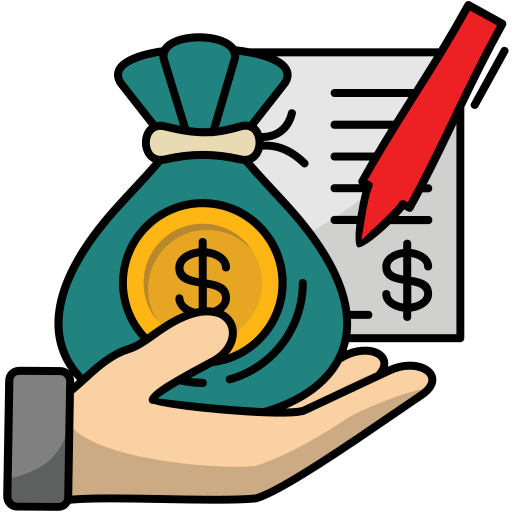Pest management is a significant, yet frequently disregarded, element of house upkeep. Unchecked, pests can bring on considerable harm to property and living beings, as well as the natural environment. Our ultimate guide to pest control provides comprehensive information on identifying potential problems early on, prevention methods that work best for your specific situation, professional services available in your area when needed as well as DIY solutions you may want to consider.
We'll also cover commonly used pesticides and their effects along with regulations regarding pesticide use, so you're sure to be informed before making any decisions. Finally, in this ultimate guide to pest control, we look at some frequently asked questions on the subject.
Identifying Pest Problems
Before eliminating pests, identifying pest issues before may be done by recognizing some of the usual indicators of infestation, like droppings or activity traces in places such as cupboards and baseboards. Some of the most obvious include droppings or other evidence of activity in areas such as cupboards and closets, or along baseboards and walls. In addition, holes in food packaging can be an indication that rodents have been present. Other signs may include a musty odor caused by mold growth or insect webs around windowsills and door frames.
The types of pests that cause these issues vary greatly depending on location and environment. Household nuisances may include a variety of creatures, such as ants, roaches, bedbugs, spiders, rodents and mice. Taking into account their different patterns of behavior is essential when trying to pinpoint the source of an issue prior to taking steps against it. For example, ants typically move in large groups while bedbugs tend to hide during the day and come out at night for feeding purposes.
Prevention and Control Methods
In this section of the ultimate guide to pest control basics, we look at sanitation techniques such as natural pest control and pest eradication with chemical options.
Sanitation and Exclusion Techniques:
Keeping your home or business clean is one of the most effective ways to reduce pest populations. This includes regularly cleaning up food debris, sweeping floors, wiping down surfaces, vacuuming carpets and furniture, emptying trash cans frequently, and sealing cracks in walls and windows. Additionally, you can install screens on doors and windows to keep pests out. These methods are relatively inexpensive but may require some effort to maintain over time.
Chemical Control Options:
For more serious infestations or for those who don’t have the time or energy to implement sanitation practices consistently, chemical control options are available. Pesticides come in many forms such as sprays, dusts, baits and traps that can be used around the perimeter of a building or directly applied inside if necessary. However these chemicals should be used with caution as they can be hazardous if not handled properly by a professional pest control operator (PCO).
Biological control options involve using natural predators like ladybugs or nematodes to help reduce pest populations without introducing toxic chemicals into the environment. This method, although not as rapid as chemical treatments, is a more secure option since it does not involve the utilization of pesticides; thus making it an appealing choice for those seeking safer alternatives to pest control.
Professional Pest Control Services
Hiring professional pest control services can be an effective way to protect your home or business from unwanted pests. In this section of the ultimate guide to pest control, we look at why engaging a specialist can be advantageous as they offer access to modern technology and knowledge in pest control. Professionals also have access to more powerful chemical treatments than those available over-the-counter, as well as specialized equipment that may not be accessible to the average homeowner.
When deciding on a pest control firm, it is essential to examine their standing and customer feedback prior to making any commitment. Ask questions about their experience with similar projects and inquire about any guarantees they offer on their workmanship. Before committing to a service provider, be sure to confirm that they have the necessary insurance coverage in place for any potential accidents or damages.
Cost considerations should always factor into selecting a service provider for pest control services. Certain providers may levy higher costs for certain treatments or zones, while others might provide discounts contingent on volume or other elements such as locality and the season when pests are most prevalent in your vicinity. Ensure you are aware of the cost and type of treatment prior to agreeing to any contracts with a pest control provider in order to avoid unforeseen expenses.
DIY Pest Control Solutions
In this section of the ultimate guide to pest control, we provide a brief discussion on DIY pest control solutions. DIY can be a great way to save money while still getting rid of unwanted pests in your home or business. Home remedies for pest control are often the most economical option, and they can also be effective if done correctly. Traps, natural repellents like peppermint oil or garlic cloves, and plugging up any entry points are common DIY pest control measures. Store-bought products for DIY solutions are another popular choice, with many sprays, baits, and dusts available on the market. When using DIY solutions, it is essential to adhere to the instructions on product labels for both safety and effectiveness. Safety precautions for DIY solutions should never be overlooked; it is important to wear protective clothing when handling chemicals or other hazardous materials associated with pest control. Unused pesticides must be disposed of in a manner that adheres to local regulations.
Commonly Used Pesticides and Their Effects
In this brief section of the ultimate guide to pest control, we look at commonly used insecticides and their effects after being used in eliminating pests or rodent control. Insecticides are chemical compounds used to control or eliminate insects, often by disrupting their nervous systems. They can be applied as a liquid spray, dust, fogger, or bait. Despite their effectiveness, insecticides must be handled with caution to avoid potential risks to human health and wildlife from improper use. Certain insecticides may have prolonged consequences that could taint water supplies or be detrimental to beneficial bugs, like bees and butterflies.
Herbicides are chemicals designed to kill unwanted plants in order to maintain desired vegetation levels in areas such as lawns, gardens, fields and roadsides. Herbicide use is regulated by state laws which vary from one jurisdiction to another; therefore it’s important for users of these products to understand local regulations before applying them. It’s also important for users of herbicides to exercise caution when using these products near waterways since runoff could potentially pollute drinking water sources or harm aquatic life.
6 .Environmental Impact of Pesticides
In this section of the ultimate guide to pest control basics, we cover the effects of chemicals used to deter rodents and in pest eradication. Pesticides are employed extensively in agrarian, forestry, and urban settings for the purpose of curbing pests. While they can be beneficial in controlling damaging pests, the environmental impact of pesticides must not be overlooked. The reckless application of pesticides can have grave consequences for both people and wildlife.
Harmful Effects on Wildlife and Humans:
Pesticides that enter into the environment can cause direct toxicity to wildlife through contact with contaminated surfaces or ingestion of poisoned food sources such as insects or plants. Additionally, these chemicals may accumulate within an organism’s body leading to long-term health effects like reproductive problems or cancerous tumors. Humans exposed to pesticides may experience a range of adverse health effects, including respiratory illnesses and various forms of cancer.
Pesticide Runoff into Water Sources:
When it rains, pesticide residue is often washed off treated fields into nearby water sources like rivers and streams where it accumulates over time causing potential harm to aquatic life forms such as fish or amphibians living in those environments. This runoff can also contaminate drinking water supplies if proper precautions are not taken by agricultural producers when applying pesticides near bodies of water.
During application processes such as aerial spraying or dusting, some pesticides become airborne particles which travel great distances before settling back down onto other surfaces potentially exposing people far away from their original source point. This can result in human inhalation risk factors associated with many common insecticides such as organophosphates (OPs). Additionally, during storage procedures, some chemicals will volatilize releasing gaseous toxins into the atmosphere further contributing to air pollution levels across large geographic regions.
7 .Regulations and Laws Regarding Pesticide Use
The EPA has instituted rules and regulations concerning the application of pesticides, aiming to protect both human health and environmental integrity. Regulations established by the EPA are in place to safeguard people and ecosystems from any potential damage that could result from incorrect or excessive pesticide use. The EPA necessitates that all pesticides be authorized by them before they can be marketed, dispersed, or employed in the US. This registration process ensures that each product meets certain safety standards for both humans and the environment.
State regulations on pesticide use may vary depending upon the locality, but typically involve restrictions related to application timing, buffer zones around sensitive areas such as schools and hospitals, record keeping requirements for applicators, worker protection rules, and other provisions meant to ensure prudent handling of these chemicals. Local governments often create additional regulations concerning the application of pesticides within their boundaries.
It is important for anyone using pesticides in any capacity to familiarize themselves with applicable laws in order to avoid potential fines or penalties resulting from noncompliance. Familiarizing oneself with the relevant laws is essential to avoiding any potential punishments for disregarding them, and guaranteeing that one remains within accepted standards.
FAQs in Relation to Ultimate Guide to Pest Control
1. Prevention:
Taking proactive steps to reduce the risk of pests entering and living in your home or business is key. This can include sealing cracks, eliminating food sources, proper storage of materials and regular cleaning.
2. Identifying the pest is key to finding an appropriate control strategy, as different species necessitate varied treatments for successful eradication. Proper identification requires an experienced eye as many species look similar but require different treatments for effective control.
3. Treatment:
Once a pest has been identified, it’s important to use appropriate treatment methods that target the specific type of pest while minimizing any potential harm to humans or other animals in the area being treated. Treatments may involve traps, baits, insecticides or natural remedies depending on the severity of infestation and type of pest present
What is the most effective way to control pest?
To effectively manage pests, IPM combines a variety of strategies such as habitat modification, cultural practices, biological controls and chemical treatments. IPM utilizes a combination of techniques, including habitat modification, cultural practices, biological controls and chemical treatments. Habitat modification involves removing sources of food or shelter for the pests. Cultural practices involve changing how you manage your land such as rotating crops and planting resistant varieties. Biological controls use natural predators to reduce pest populations while chemical treatments are used when other methods have failed. Proper identification of the pest species is essential in order to select an appropriate method for controlling it.
What is the hardest pest to get rid of?
The hardest pest to get rid of is the bed bug. Bed bugs can persist for a lengthy period of time without sustenance, proving to be incredibly hardy. They hide in small crevices and hard-to-reach places, making them difficult to locate and treat. Additionally, they have developed resistance to many insecticides used by exterminators today. The best way to eradicate bed bugs is through thorough inspection of the home or business premises followed by multiple treatments using specialized products that target these pests specifically. Professional pest control services may also be necessary if an infestation has become severe or widespread.
1. Identification:
Properly identifying the pest is essential to formulating an effective control strategy. Accurately recognizing the pest and its behavior, as well as where it tends to reside, can help you decide on a suitable solution for elimination.
2. Prevention:
Taking preventive measures such as sealing entry points and removing food sources can reduce the chances of a pest infestation in your home or business environment.
3. Monitoring:
Regular monitoring allows for early detection of pests so that prompt action can be taken before they become established in large numbers and cause damage to property or spread disease-causing pathogens.
4. Control Methods:
Depending on the situation, various methods may be used to eliminate existing pests from a given area including trapping, baiting, chemical applications (pesticides), physical barriers (fences), biological controls (predators/parasites) etc
Conclusion
The ultimate guide to pest control has provided a comprehensive overview of the various issues related to identifying, preventing and controlling pests. It is essential for individuals to understand the potential risks of utilizing pesticides, as well as any relevant laws or regulations in their vicinity, so that they can make informed decisions regarding pest control while reducing environmental impacts. With this knowledge, individuals can make informed decisions on how best to manage their pest problems while minimizing environmental impacts.
There are many effective ways to pest control, whether it is natural remedies to deter rodents or chemicals used to kill insects we hope this complete guide helps you. In discovering this ultimate guide to pest control, do connect with vetted local pros for all your needs at Local Services USA. Get fair pricing, financing services, and creative marketing solutions to grow your small business today!




































